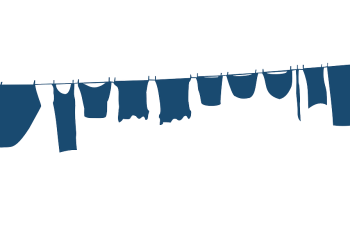The fashion industry produces a staggering amount of waste each year, from unsold inventory to discarded clothing. As consumers, we have the power to reduce fashion waste by making mindful shopping choices. Here’s a guide to shopping sustainably and contributing to a more eco-friendly future.
Plan Your Purchases
One of the most effective ways to reduce waste is to shop with intention:
- Create a Shopping List:
- Identify the specific items you need to fill gaps in your wardrobe.
- Stick to your list to avoid impulse buys.
- Assess Your Current Wardrobe:
- Before purchasing new items, evaluate what you already own.
- Rediscover forgotten pieces and consider how they can be restyled.
- Avoid Trend-Driven Purchases:
- Focus on timeless styles that won’t go out of fashion quickly.
- Invest in versatile pieces that work across seasons.
Planning ahead ensures that your purchases are thoughtful and necessary.
Choose Quality Over Quantity
Investing in durable, high-quality clothing reduces the need for frequent replacements:
- Inspect Construction:
- Look for sturdy stitching, reinforced seams, and high-quality fabrics.
- Avoid garments with loose threads or flimsy materials.
- Research Brands:
- Support companies known for their commitment to quality and sustainability.
- Read reviews to gauge the durability of items.
- Prioritize Cost-Per-Wear:
- Consider the long-term value of an item based on how often you’ll wear it.
Quality clothing not only lasts longer but also reduces waste by staying in your wardrobe for years.
Shop Second-Hand
Thrifting is an excellent way to reduce fashion waste and find unique items:
- Benefits:
- Extends the life of clothing by keeping it out of landfills.
- Offers access to high-quality, one-of-a-kind pieces at affordable prices.
- Where to Shop:
- Explore local thrift stores, vintage shops, and online platforms like Depop or Poshmark.
- Attend clothing swaps or flea markets for additional options.
- Tips for Success:
- Visit frequently, as inventory changes regularly.
- Be patient and open-minded to discover hidden gems.
Second-hand shopping promotes circular fashion and minimizes environmental impact.
Opt for Sustainable Fabrics
The materials used in your clothing have a significant impact on the environment:
- Choose Eco-Friendly Fabrics:
- Organic cotton, hemp, and Tencel are sustainable alternatives to conventional fabrics.
- Recycled polyester and nylon reduce waste and resource use.
- Avoid Harmful Materials:
- Steer clear of fabrics like conventional polyester and nylon, which are derived from petroleum.
- Be cautious with leather and fur due to their ethical and environmental implications.
- Look for Certifications:
- Seek out labels like GOTS (Global Organic Textile Standard) or OEKO-TEX for verified sustainable practices.
Supporting sustainable fabrics helps reduce the overall environmental footprint of your wardrobe.
Embrace Minimalism
Adopting a minimalist approach to fashion encourages thoughtful consumption:
- Build a Capsule Wardrobe:
- Focus on a curated collection of versatile, high-quality items.
- Choose neutral colors and timeless silhouettes that can be mixed and matched.
- Follow the One-In-One-Out Rule:
- For every new item you buy, donate or recycle an old one.
- Practice Mindful Shopping:
- Avoid the allure of sales and discounts unless the item is a true necessity.
Minimalism simplifies your life while reducing fashion waste.
Support Ethical Brands
Choose brands that prioritize sustainability and ethical practices:
- Research Transparency:
- Look for companies that disclose information about their supply chains and labor practices.
- Certifications to Consider:
- Fair Trade, B Corp, and Cradle to Cradle certifications indicate ethical operations.
- Examples of Ethical Brands:
- Patagonia, Eileen Fisher, and Reformation are leaders in sustainable fashion.
Supporting ethical brands drives demand for responsible practices across the industry.
Repair and Upcycle
Extend the life of your clothing by repairing or repurposing old items:
- Basic Repairs:
- Learn to sew buttons, mend tears, or hem pants.
- Take items to a tailor for more complex alterations.
- Upcycling Ideas:
- Transform jeans into shorts or tote bags.
- Add patches, embroidery, or dye to refresh outdated garments.
- Creative Projects:
- Use fabric scraps to create accessories like headbands or scarves.
Repairing and upcycling reduces waste while allowing you to personalize your wardrobe.
Avoid Overpacking
Traveling light reduces the likelihood of waste and promotes sustainable habits:
- Pack Versatile Items:
- Choose clothing that can be styled in multiple ways.
- Stick to a cohesive color palette for easy mixing and matching.
- Use Reusable Accessories:
- Opt for travel-friendly items like reusable bags, water bottles, and toiletry containers.
Packing smartly minimizes the need for last-minute purchases and waste.
Donate and Recycle Responsibly
Dispose of unwanted clothing in an environmentally friendly way:
- Donate to Charities:
- Give gently used items to organizations that support those in need.
- Recycle Textiles:
- Many cities have textile recycling programs or drop-off points.
- Some brands, like H&M and Levi’s, offer take-back programs for old clothes.
- Avoid Landfills:
- Only discard clothing as a last resort.
Responsible disposal ensures that your items are reused or repurposed rather than wasted.
Educate Yourself and Others
Raising awareness about fashion waste is crucial for creating change:
- Stay Informed:
- Read articles, watch documentaries, and follow sustainability advocates on social media.
- Share Knowledge:
- Encourage friends and family to adopt sustainable shopping habits.
- Support Policy Changes:
- Advocate for legislation that promotes sustainable practices in the fashion industry.
Collective efforts can lead to a more sustainable future for fashion.
By adopting these shopping tips, you can reduce fashion waste and contribute to a more sustainable world. Every small step counts toward building a responsible and stylish wardrobe that aligns with your values.








